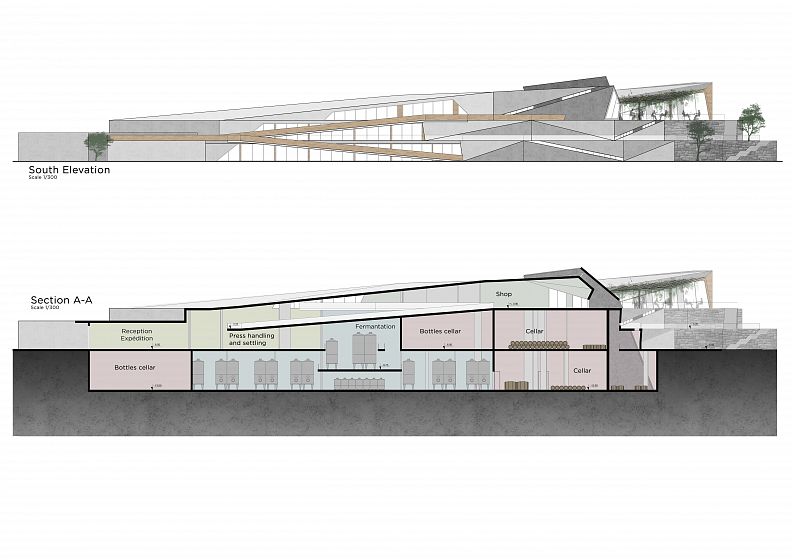Before the massacre, there was a miracle... "Cana of Galilee"

Project idea
The space has an emotional and memorial value stronger than the architectural quality.
The question would be how to conserve memory in this place, and how to conserve life in this space.
Cana, a village 93 kilometers south of Beirut, which stands in the heart of South Lebanon, is mentioned in the Bible as the site of the first miracle of Jesus Christ.
In the actual site of Cana's marriage is the rest of the jars used by Christ to convert the water.
In this predominantly Shiite village, there is a Christian quarter where the Church of St. Joseph stands.
The Israeli attacks of April 18, 1996 and July 30, 2006 left a permanent mark on the village and its residents. A memorial was built to commemorate the 1996 massacre. The victims of the 2006 massacre, all of whom are children, are buried at the site of the massacre near the main road.
Project description
The project offers an addition to the tourist and cultural dimensions of Cana, which will put tourists in the village and make them spend more time there.
A- The wine of the first miracle:
The project develops the idea of designing a winery.
B-The wedding jars:
Intervention of the place of the jars
C- The children’s memorial:
Intervention at the place of the massacre
A- The wine of the first miracle:
The project is designed across the two axes of the main road; and the axis of the church creates a square that divides the project between factory and restaurant. The main objective is to focus on how to integrate architectural forms into landscapes.
The wine undergoes different stages of production.
Two different categories of users will animate the building: the visitor, and the worker.
The visit offers visitors an exciting and intense experience, guiding them through the different stages of winemaking, in the tasting room and then in the restaurant.
The building is the continuation of the district, which extends towards the terraced vineyard levels, where the rows of vines follow the lines of the ground and are bordered by olive trees. The linear shape of the building extends along the layers, while it is also partially embedded in the ground.
B- The wedding jars:
The goal is to work on the location of the jars which are scattered, at the bottom of a ditch; by designing an archaeological garden that connects the three levels of the land.
C- The children’s memorial:
The children martyrs of the massacre are buried where they died on July 30 2006, following the Israeli bombardments. The goal is to build a memorial to be able to respectfully commemorate the victims of the massacre, and to promote the humanization of humanity through the preservation of memory.
The entrance to the memorial captures visitors and takes them on a journey through the past, confronting historical events, to reach the graves of the martyrs. As a result, visitors emerge into the bright space that symbolizes a promising future, to be released in the outdoor garden.
Technical information
An analysis of regional building materials is important to design an architecture that fits into the landscape.
The reinforced concrete structure, the tapered columns and the huge windows make the building open and communicative inside and out. The interior offers an interesting overview of the production processes and a unique panoramic view from the terraces
The region is characterized by the presence of rural houses. Stone, with a porous and rough texture and nuances that flirt between light brown and gray, is mainly used for the walls of houses. In addition the use of stones, for their aesthetics and their porosity, represents an interesting characteristic applicable to the project of a cellar and wood can represent an interesting solution with reference to the wooden oaks in which the wine ages.

























